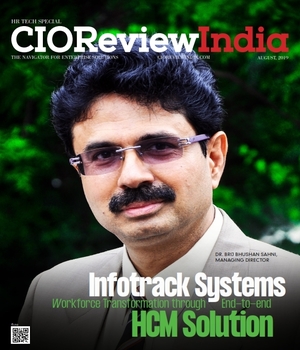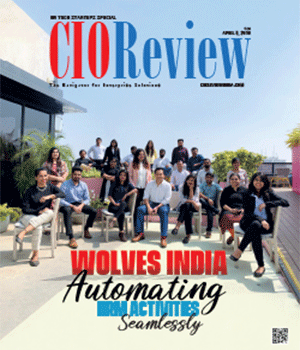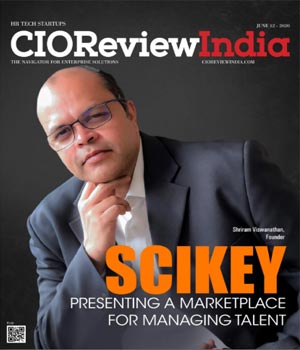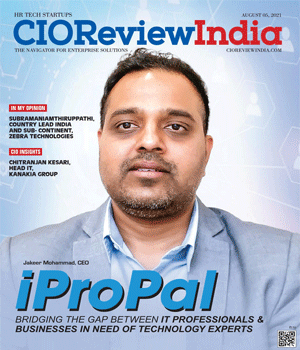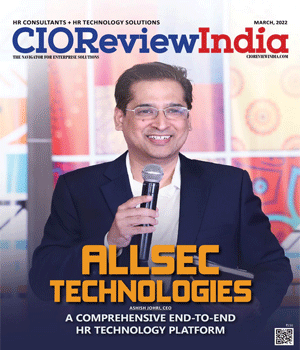
Build an Effective Data Strategy for Cloud and Mobility
Ramesh Mamgain, Area Vice President, Commvault | Wednesday, 04 May 2016, 12:39 IST
 In a world that is increasingly driven by cloud and mobile forces, organizations need to reassess their data management strategies.
In a world that is increasingly driven by cloud and mobile forces, organizations need to reassess their data management strategies.
The powerful forces of cloud and mobility have caused a major shift in information management strategies for organizations across the globe. CIOs and IT managers are looking for effective ways to realign their data management strategies with these new realities that are well and truly upon us. The challenge is to strike the right balance between organization needs and user demands. As we continue to move to a cloud-based IT infrastructure, data protection is critical for securely and reliably sharing information with customers, colleagues or business partners.
IT managers must leverage the advantages of cloud and mobility to boost the productivity of employees. However, at the same time they also have to ensure that users get the same experience that they already get from mobile devices and consumer clouds, particularly in terms of ease of data access and sharing. With users now predominantly mobile oriented, managing their ever increasing expectations poses a major challenge for IT administrators.
Most organizations are looking at moving beyond their traditional storage practices and allowing more data to exist on mobile devices than in the data centre. This has also increased pressure to tighten security and governance on mobile data. Typically, IT support for data on mobile devices is only restricted to basic backup for laptops with little or no provision made for smartphones and tablets. But with increasing use of mobile devices, this will have to change.
The Challenge of Managing Data on Mobile Devices
Managing data on mobile devices has its own risks and challenges. Apart from cost-related issues, CIOs have to manage user expectations while controlling access in a way that does not hinder the overall productivity of employees. If users are told not to use public cloud sharing solutions but are not offered an option by IT that is equal in terms of capability, they are most likely to continue using them. While users want their own freedom easily share and collaborate via mobile devices and laptop, the IT strategy may not always be in sync with their compelling work-related requirements. So how do organizations deliver a data management strategy that suits both users and IT teams in a cloud and mobile-driven world? The answer is that they need to redefine data management and give data mobility the due importance it deserves. In order to build an effective data management strategy in a mobile landscape, the IT team needs to clearly define what data has to be carried on mobile devices, where it can be stored, how it will be used and what are the potential risks associated with it.
More often than not CIOs and IT managers tend to avoid these questions because they either find it too cumbersome to collate this information or they are afraid of creating resentment among employees. But these are real questions that need to be effectively addressed. It’s common place for teams to share information in open public cloud folders such as Dropbox or OneDrive, but in most cases IT is not able to ensure adequate protection for that information.
How to Redefine Your Data Strategy
In order to effectively utilize mobile and cloud forces, CIOs need to look at solutions that can help protect and govern information in the new mobile landscape. It is possible for organizations to mitigate all the challenges and provide the productivity tools that can keep users happy and collaborative.
The wide availability of fast networks and reduplication technologies mean that managing data and information from user’s laptops isn’t as intrusive or challenging as it used to be, and once back in your data centre, you can start to manage the data so that it works in everyone’s favor.
When data is under the enterprise data management framework, you can enable secure, reliable and protected file sync and share capabilities to ensure information is synchronized and available on mobile devices. This ensures adequate governance and protection of company information, while employees have access to what they need, when they need it and from whatever device they are using. By managing information on user’s devices, organizations can effectively ensure the data is backed up, keeping employees productive even if the worst happens, all with the security of remote wipe for lost or stolen devices.
Creating the Governance Framework
As the mobile workforce continues to escalate and the amount of data generated outside the data centre increases, bringing endpoint protection into a searchable dataset for governance, compliance or legal reasons becomes very critical.
Given this does raise privacy concerns for some, organizations need to be completely transparent about what information is collected and how it is used. When redefining data management to extend to endpoint protection, organizations should create a privacy charter to ensure employees understand what this means for them. This is not really as complex as it seems but it is definitely more critical than you realize and, with the right technology, corporate actions can be audited for transparency.
CIO Viewpoint
Is Business Intelligence (BI) using Analytics...
By Lalit Popli, Head of Information Technology, ICICI Prudential AMC
How Disruptions in Internet of Things to Impact...
By Dalveer Singh, Head IT, Sentiss Pharma
HR Tech: It is Not Only About HR
By Babu Thiagarajan, Head - Technology, Fidelity International, India
CXO Insights
Digitalization in HR Operations
By Jaishankar Balan, Head, Human Resources at Bharti AXA Life Insurance
People Analytics: Critical to driving Business...
By Manan Jain, Lead- HR People Partner & Experience, India, YASH Technologies
Components Of Strategic Management Model


